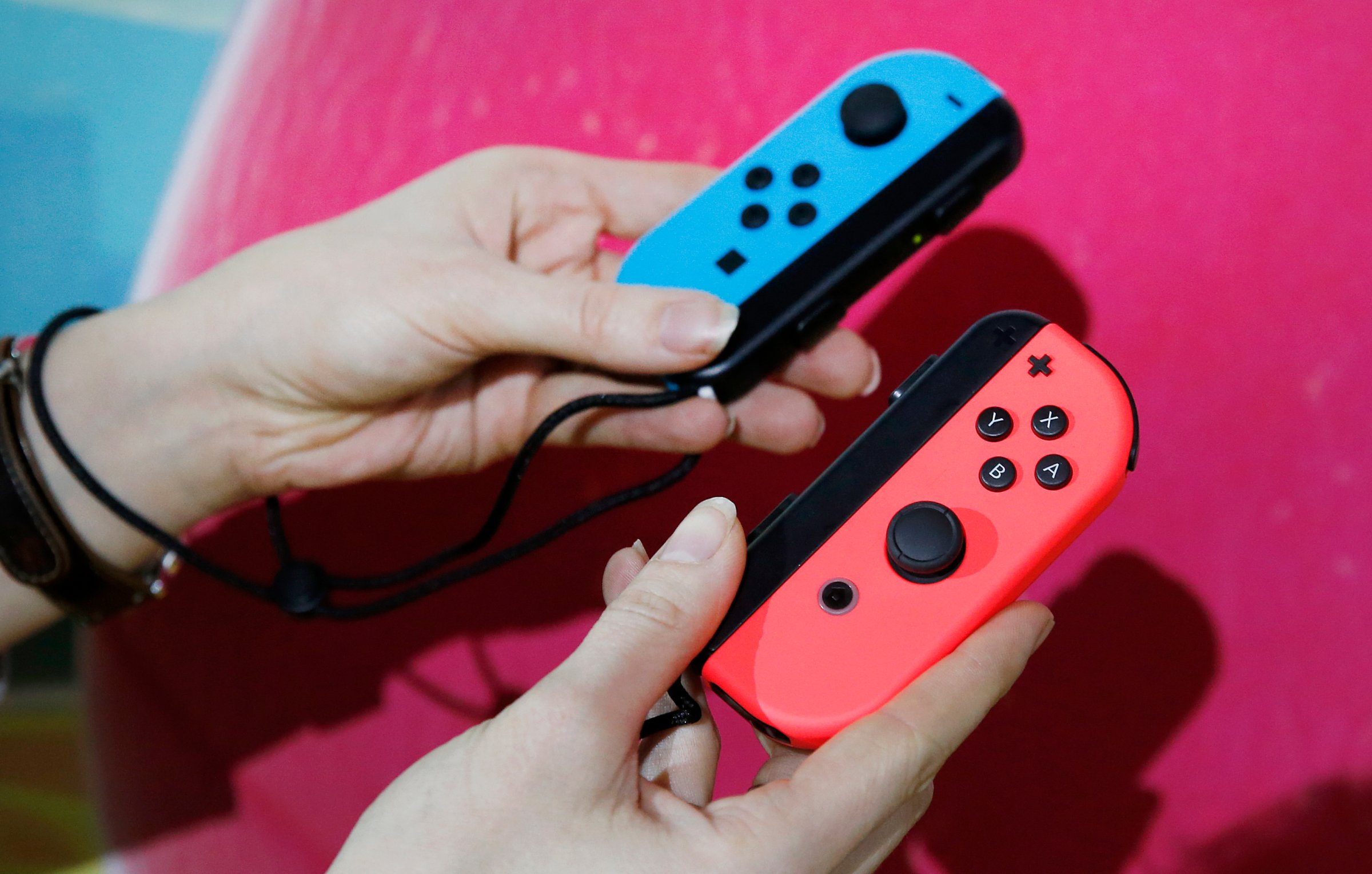
“Whoa,” says my 4-year-old son incredulously as I scoot onto his bunk bed clutching Nintendo’s new games console, which is called the Switch. We’d been playing The Legend of Zelda on our living-room television, until I tell him it’s time to say good night–then I follow him to his room, Switch in tow. “Are we going to play the new Zelda in my bed?” he squees, same as when we okay room-scale blanket forts or tell him it’s a “stay up late” night. This may be the kind of scenario Nintendo’s designers imagined when they dreamed up the device, a small tablet with attachable buttons and joysticks that can also be plugged into your TV for big-screen gaming.
Nintendo is billing the Switch, which will cost $299 when it goes on sale March 3, as a box of delights that goes wherever its players do. Given the dominance of mobile games for the vast number of existing tablets and smartphones out there, as well as the lackluster popularity of the company’s previous console, the Wii U, it’s a gamble. But Nintendo has done it before, as when its original Wii upended traditional notions of who games are for or with its handheld 3DS line, sales of which have stayed strong even in a world dominated by inexpensive phones.
In hand, the Switch feels durable, an unostentatious but beautiful carbon-black slate that’s like a blue collar version of an Apple product. At roughly the same weight as an iPad Mini, it is suitably compact and lightweight to make playing games comfy.
The company is also promising some interesting new twists on traditional gaming. Consider 1-2-Switch, a $59 party game that challenges a pair of face-to-face players to milk cows, thump their chests like gorillas or sashay like runway models. Using motion sensors built into the Switch’s detachable controllers, these games challenge players to ignore the screen and look into each other’s eyes–a video game without the video part.
But Nintendo’s masterstroke may be that anyone can grok why the Switch exists by observing what it does. Drop it in its cradle, count to three, and it’s on your TV. Pull it out, and it’s in your hands. Decouple the controllers from its sides, pop the rear kickstand and it’s on a table (or seat-back tray). Much depends on how many games become available for the system or what its promised online capabilities look like when they launch later this year. But the theory–of a device that both follows players and, just maybe, revitalizes face-to-face engagement in this era of “alone together”–seems laid on solid footing so far.
More Must-Reads From TIME
- The 100 Most Influential People of 2024
- Coco Gauff Is Playing for Herself Now
- Scenes From Pro-Palestinian Encampments Across U.S. Universities
- 6 Compliments That Land Every Time
- If You're Dating Right Now , You're Brave: Column
- The AI That Could Heal a Divided Internet
- Fallout Is a Brilliant Model for the Future of Video Game Adaptations
- Want Weekly Recs on What to Watch, Read, and More? Sign Up for Worth Your Time
Write to Matt Peckham at matt.peckham@time.com